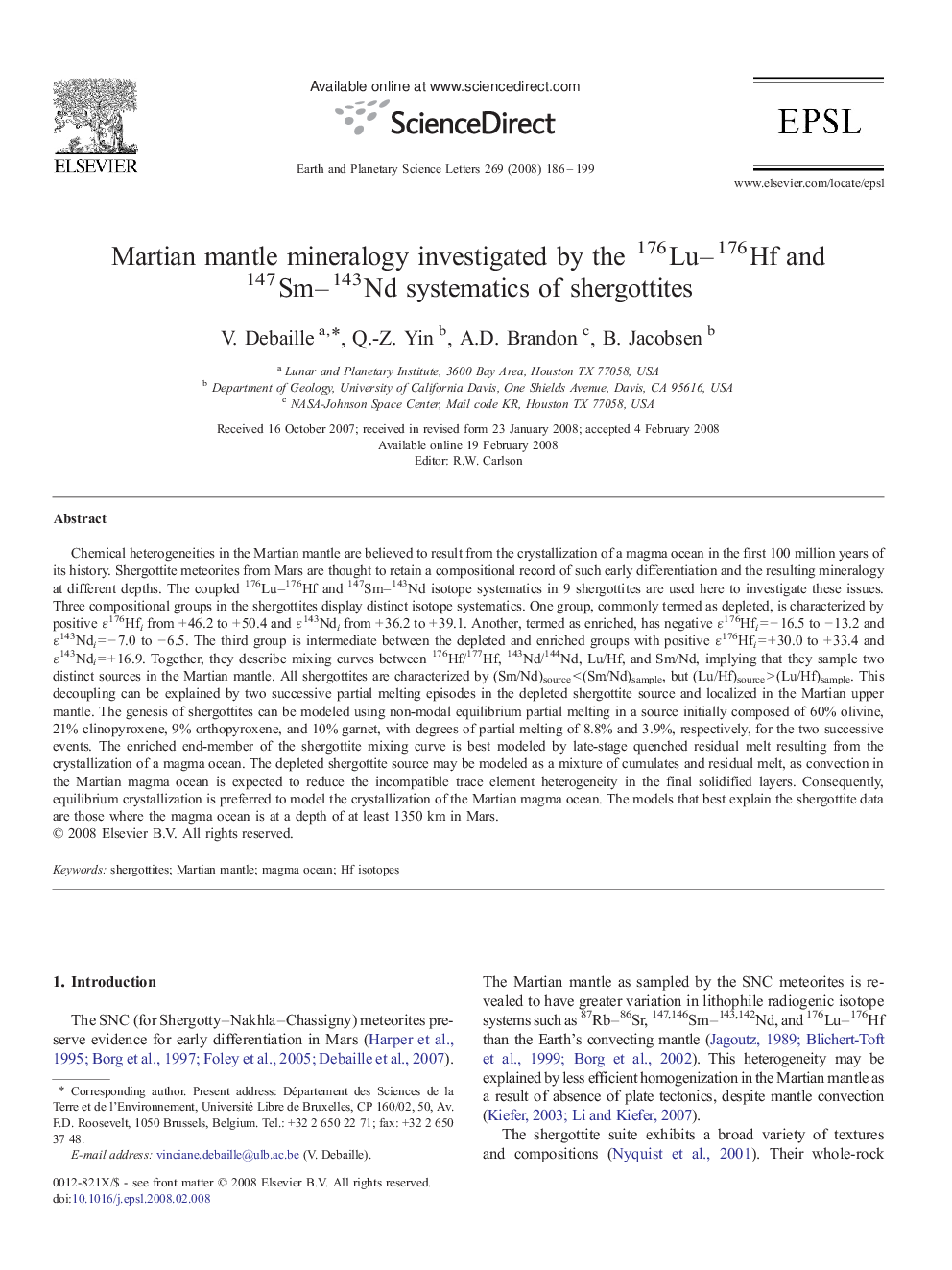| Article ID | Journal | Published Year | Pages | File Type |
|---|---|---|---|---|
| 4679932 | Earth and Planetary Science Letters | 2008 | 14 Pages |
Chemical heterogeneities in the Martian mantle are believed to result from the crystallization of a magma ocean in the first 100 million years of its history. Shergottite meteorites from Mars are thought to retain a compositional record of such early differentiation and the resulting mineralogy at different depths. The coupled 176Lu–176Hf and 147Sm–143Nd isotope systematics in 9 shergottites are used here to investigate these issues. Three compositional groups in the shergottites display distinct isotope systematics. One group, commonly termed as depleted, is characterized by positive ɛ176Hfi from + 46.2 to + 50.4 and ɛ143Ndi from + 36.2 to + 39.1. Another, termed as enriched, has negative ɛ176Hfi = − 16.5 to − 13.2 and ɛ143Ndi = − 7.0 to − 6.5. The third group is intermediate between the depleted and enriched groups with positive ɛ176Hfi = + 30.0 to + 33.4 and ɛ143Ndi = + 16.9. Together, they describe mixing curves between 176Hf/177Hf, 143Nd/144Nd, Lu/Hf, and Sm/Nd, implying that they sample two distinct sources in the Martian mantle. All shergottites are characterized by (Sm/Nd)source < (Sm/Nd)sample, but (Lu/Hf)source > (Lu/Hf)sample. This decoupling can be explained by two successive partial melting episodes in the depleted shergottite source and localized in the Martian upper mantle. The genesis of shergottites can be modeled using non-modal equilibrium partial melting in a source initially composed of 60% olivine, 21% clinopyroxene, 9% orthopyroxene, and 10% garnet, with degrees of partial melting of 8.8% and 3.9%, respectively, for the two successive events. The enriched end-member of the shergottite mixing curve is best modeled by late-stage quenched residual melt resulting from the crystallization of a magma ocean. The depleted shergottite source may be modeled as a mixture of cumulates and residual melt, as convection in the Martian magma ocean is expected to reduce the incompatible trace element heterogeneity in the final solidified layers. Consequently, equilibrium crystallization is preferred to model the crystallization of the Martian magma ocean. The models that best explain the shergottite data are those where the magma ocean is at a depth of at least 1350 km in Mars.
